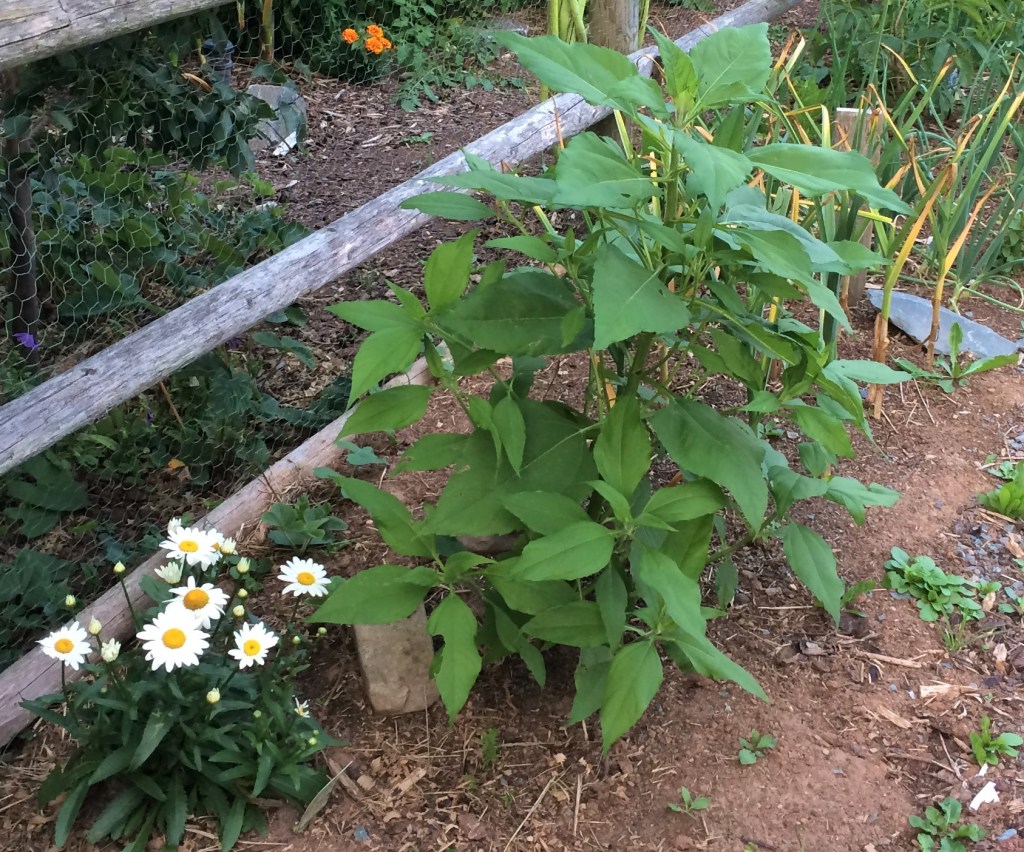In my gardening journey, I seek plants that grow well in my climate. If they are perennial – come back every year – it’s an added bonus. If I can eat it, it’s a staple.
Sunroot is both perennial and edible. They’ve been eaten by humans for centuries, yet I didn’t grow up eating them or growing them in the garden. I don’t know anyone who grew them. Once a staple in the homesteader garden, the sunroot has been replaced with more fashionable edible perennials such as rhubarb and asparagus.
When I tried to find a source for the tubers, I failed. My sister and her son joined the hunt. After two years, my nephew stumbled upon an old rural garden outlet that had sunroots growing in its field. They didn’t sell it but remembered it was growing there. They dug up a few tubers, and I was the lucky recipient of three small pieces.
That was late spring 2020. I planted mine, but there wasn’t much top growth that summer. In September, I dug up the plants and was surprised the tubers had multiplied well. This gave me the opportunity to eat several tubers and to replant tubers to grow for the 2021 growing season.
The first year’s growth was short.
I ate tubers in three forms. The first was raw, sliced thinly. The second was sliced thin and fried. The third was boiled. My favourite was fried.
This year, the sunroots popped out of the ground in early spring and the warm weather encouraged them to grow fast. By mid-July, they were as tall of me. By the end of August, they were seven to eight feet tall.
All summer and into fall, I looked for flower buds. Not until September 28th did the first blossom open. Sunroots are in the same family as sunflowers. This is where they get their height and yellow flower petals. However, the flowers are small compared to the head of a sunflower.
Digging up the tubers early in October revealed the extreme growth beneath the surface. One plant easily provides six cups of edible food.
Sunroots are an excellent survival food and perfect for the prepper who wants a no-maintenance food source that returns each year. This is why I included sunroots in my novel Natural Selection. One mention of the plant that appears in the first paragraph of Chapter 3 is:
The sun was sinking towards the horizon, but Eloise gave it no mind. Larkspur was in view while she gathered wildflowers for the vase that would decorate the table for the evening meal. The fish her uncle had caught this morning in the nearby river, the sunroots and the salad of dandelion leaves and watercress were almost ready for consumption. Seeing purple clover in bloom, she picked several flowers to add to the salad.
Sunroot, also known as Jerusalem artichoke, sunchoke, wild sunflower, topinambur and earth apple, is a species of sunflower native to central North America. It is cultivated widely across the temperate zone for its tuber, which is used as a root vegetable.
This root ball is replanted to grow again.
Sunroot is a perennial that grows well in our Nova Scotia climate and can survive our harsh winters. The tubers are harvested in October. One tuber can be planted immediately after harvest to replace the plant, or the root ball can be replanted. I do the second: plant the root ball for a continual supply of tubers. This is my second year in doing this.
Tubers are known to cause gas, so if you’ve never had them before, eat a little to test your gas-maker.
The tuber.
If left unchecked, sunroots can become invasive. When I harvest in the fall, I pull up every stray root, so the only thing that goes back into the ground is the root ball.
Have you ever eaten sunroots before? Have you grown them? Personally, it tastes like a nutty potato, but not everyone feels the same way.






No, I’ve never heard of sunroots, so thanks for the lesson. It seems you’re really getting into the garden growing groove. 🙂
LikeLiked by 1 person
Sunroots is one of those old-time foods forgotten by most, including me. I love rediscovering all these wonderful foods I can grow in my own yard. While I’ve been gardening all my life and worked at various garden centres, I’ve not heard of many and they feel foreign to my tongue.
LikeLiked by 1 person
We are always learning. 🙂
LikeLiked by 1 person